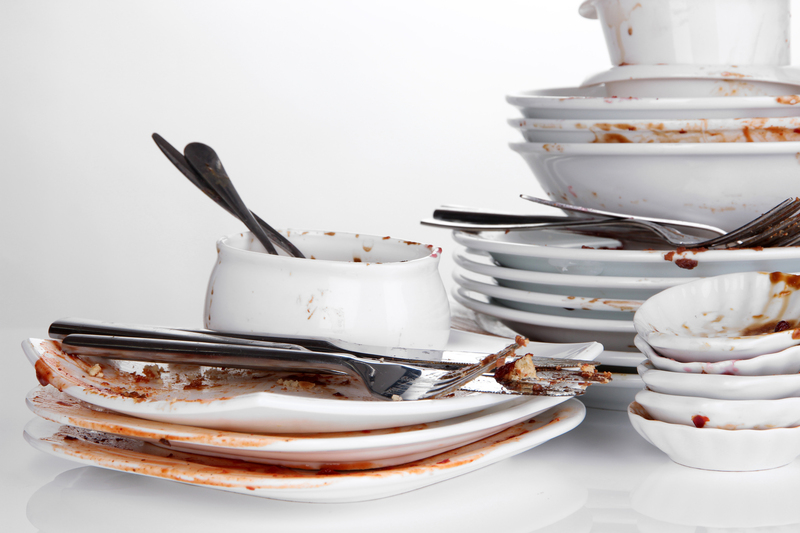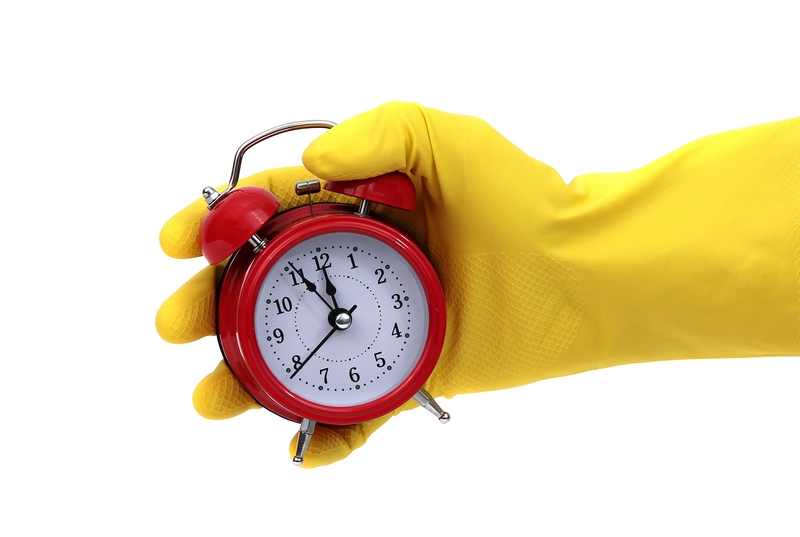Essential Guide: Safeguarding Sofa Covers during Wash
Posted on 01/09/2025
Essential Guide: Safeguarding Sofa Covers during Wash
Maintaining the pristine look and longevity of your sofa often goes beyond regular dusting and vacuuming. Sofa covers, also known as slipcovers, serve as the first line of defense against spills, stains, and everyday wear. But how do you safeguard your sofa covers during wash to keep them fresh, durable, and looking as new as the day you bought them? In this comprehensive and user-friendly guide, we will explore expert-approved methods, strategies, and washing tips to ensure your sofa covers remain protected and beautiful after every wash.
Understanding Your Sofa Cover Material
Before you even think about tossing your sofa slipcovers into the washing machine, the first and most critical step is recognizing what material they're made of. Fabrics react differently to water, detergent, and movement during washing. Here are some common types of sofa cover materials and their characteristics:
- Cotton: Breathable and soft, cotton covers are easy to clean but can shrink if washed in hot water.
- Polyester/Microfiber: These synthetic materials are highly durable and stain-resistant but can be susceptible to heat damage.
- Linen: Luxurious and elegant, linen sofa covers require gentle care and may wrinkle or shrink easily.
- Velvet: Plush and elegant, velvet slipcovers need extra care to maintain their texture.
- Blends: Many covers are made from a mix of fabrics, requiring you to adhere to the most delicate washing protocol among them.
Always read the care label supplied by the manufacturer. Not only will the label tell you if the sofa cover is machine washable, but it will also note the ideal water temperature, dryer settings, and special instructions.

Pre-Wash Preparation: Ensuring Optimal Protection
Proper preparation can make all the difference when protecting sofa slipcovers during washing.
1. Vacuum and Spot Clean First
Before removing your sofa covers, vacuum them using an upholstery attachment. This eliminates dust, dirt, and pet hair that could turn into mud or set stains during washing. For visible stains, apply a gentle stain remover and blot the area with a clean cloth. Avoid scrubbing, as this can push the stain further into the fabric.
2. Inspect for Damage
Examine every seam and zipper for existing damage. Repairing rips or tears pre-wash can prevent them from worsening in the machine.
3. Remove Hardware and Fasteners
Take off any detachable buttons or decorative elements. Fasten all Velcro strips and zippers to minimize snagging and preserve shape.
4. Turn Inside Out
Turning your sofa covers inside out shields the fabric's outer surface from friction and possible abrasion during washing, especially for covers with patterns or delicate prints.
Choosing the Right Wash Cycle and Detergent
The secret to protecting sofa covers in the wash lies in gentle handling and the right cleaning agents.
1. Use Cold Water
Wash your covers with cold water to reduce shrinkage, color bleeding, and fiber breakdown. Hot water can be harsh, especially on natural fabrics like cotton and linen.
2. Select a Gentle Cycle
Always opt for the 'delicate' or 'gentle' washing machine cycle. This setting reduces agitation and spin speed, helping to maintain the cover's integrity and shape.
3. Mild, Sofa-Safe Detergent
Select a detergent that's free from bleach, optical brighteners, or harsh chemicals. Mild, hypoallergenic formulas are ideal for safeguarding your sofa covers when washing.
4. Avoid Overloading
Overstuffing the washer prevents adequate cleaning and creates excess wrinkles and damage. Wash large slipcovers one at a time or in small, evenly distributed loads.
Advanced Tips: Extra Protection During Washing
- Use Mesh Laundry Bags: Place removable cushion covers, especially those of delicate fabric, in mesh laundry bags to prevent tangling and pilling.
- Hand Wash When Necessary: For covers labeled 'hand wash only' or those you suspect are fragile, hand washing ensures minimal stress on the fabric.
- Pre-Soak for Stubborn Stains: If covers are challenged by grime, pre-soak them in a basin with tepid water and mild detergent for 15-30 minutes.
- Favor Liquid Over Powder Detergents: Powders can leave residues in seams and create stiff textures, while liquids dissolve more evenly.
Proper Drying Methods: Don't Undo Your Hard Work
Drying is just as crucial in the process of safeguarding sofa covers during wash. The right drying method ensures the covers don't shrink, lose shape, or experience fabric stress.
1. Air Dry Whenever Possible
The safest way to dry slipcovers is air drying. Lay the covers flat on a clean towel or hang them up inside out, away from direct sunlight (to avoid fading). If laying flat, rearrange periodically for even drying.
2. Use the Dryer Wisely
If you must use a dryer, select the lowest heat setting. Remove slipcovers when still slightly damp to minimize wrinkles and simplify fitting them back onto cushions. Never force-dry on high temperatures, as this can cause irreversible shrinkage.
3. Reshape and Smooth Out
While covers are damp, gently tug seams and edges back into shape. This prevents warping or misfitting later and preserves the original look of your sofa.
Ironing and Steaming: The Finishing Touch
After drying, your covers may have creases. Iron on low heat (if recommended by the care label) or use a garment steamer. This freshens the fabric and removes wrinkles. Always iron inside out and use a pressing cloth for delicate materials.
Reassembly: Fitting Covers Back On
- Replace covers while slightly damp: This takes advantage of the fabric's flexibility for a snug, wrinkle-free fit.
- Straighten seams and corners: Ensure covers align with the contours of the sofa to maintain its crisp silhouette.
Common Mistakes to Avoid When Washing Sofa Covers
- Ignoring care instructions: Not every cover is machine washable. Always follow manufacturer guidelines.
- Using hot water or high heat: This causes shrinkage and sets stains permanently.
- Skipping pre-treating stains: Once set by a wash or dryer, some stains become nearly impossible to remove.
- Overusing detergent: Excess soap leaves residues that stiffen fabric and attract dirt more quickly.
- Overcrowding the machine: This can twist and stress the fabric, leading to distorted fits or damaged covers.
Special Considerations: Pet and Allergy-Friendly Washing
For households with pets or allergy sufferers, it's essential to eliminate allergens and odors while also safeguarding your sofa slipcovers:
- Add a hypoallergenic rinse: Ensure any detergent is thoroughly washed away during the rinse cycle to prevent irritation.
- Use a fabric-safe sanitizer: Opt for formulas reviewed as safe for textiles and sensitive skin, especially for families with children.
- Extra rinse cycle: Helps remove pet dander and detergent remnants for a fresher finish.
- Deodorizing step: Baking soda or white vinegar added during the wash neutralizes stubborn odors.
Maintaining Sofa Covers Between Washes
Extend the lifespan of your slipcovers with routine care:
- Spot clean immediately after spills to avoid stains setting.
- Brush or vacuum weekly to remove dust and crumbs.
- Rotate seats and cushions to distribute wear evenly.
- Use throws and blankets on high-traffic areas for extra protection between deep cleans.

FAQs: Protecting Sofa Covers in the Wash
Can I wash all sofa covers in a washing machine?
Not all sofa covers are machine washable. Always check the manufacturer's tag. Some delicate or fitted covers may only tolerate hand washing or professional dry cleaning.
What is the best way to prevent sofa covers from shrinking?
Always use cold water, a gentle cycle, and avoid high heat when drying. Fitting them back onto the sofa while still damp also helps maintain size and shape.
How often should sofa covers be washed for best maintenance?
Generally, wash every 3-6 months, or more often for homes with pets, allergies, or high usage.
Is it safe to use stain removers on sofa covers?
Yes, but always test on a small, hidden area first. Opt for mild, color-safe formulas free from bleaching agents.
Conclusion: Keep Your Sofa Covers Fresh and Protected
Learning how to safeguard your sofa covers during wash is crucial for preserving both the look and longevity of your beloved furniture. With careful preparation, gentle washing, proper drying, and the right maintenance techniques, your slipcovers will continue to shield your sofa while providing a cozy and stylish touch to your living room.
Whether you have cotton, linen, polyester, or a blend, following these tips will help keep your sofa covers protected and beautiful, wash after wash. Always follow the care instructions, avoid harsh treatments, and treat your sofa covers with care--because a well-maintained slipcover means a longer life for your sofa and a fresh look for your home.




